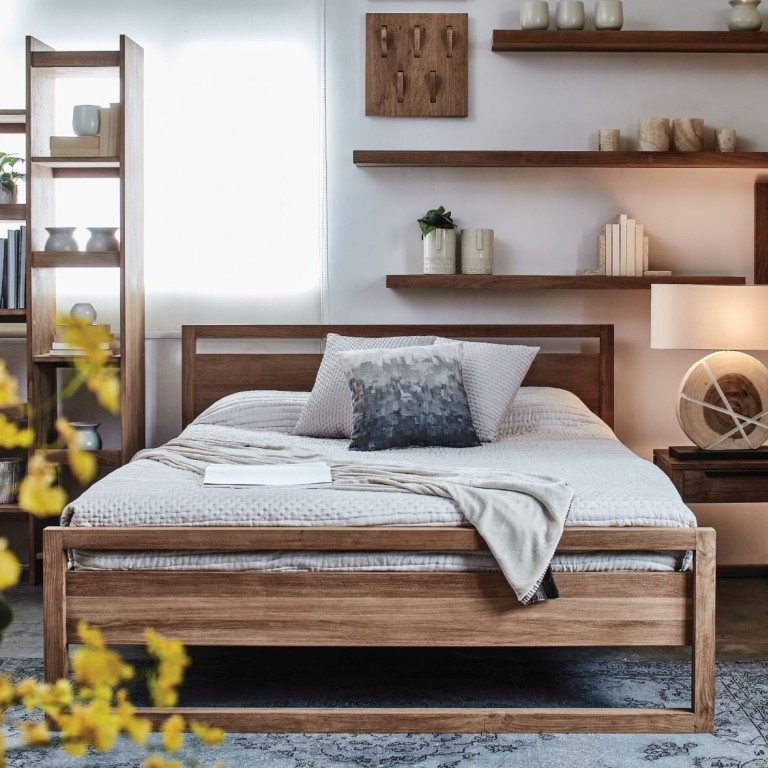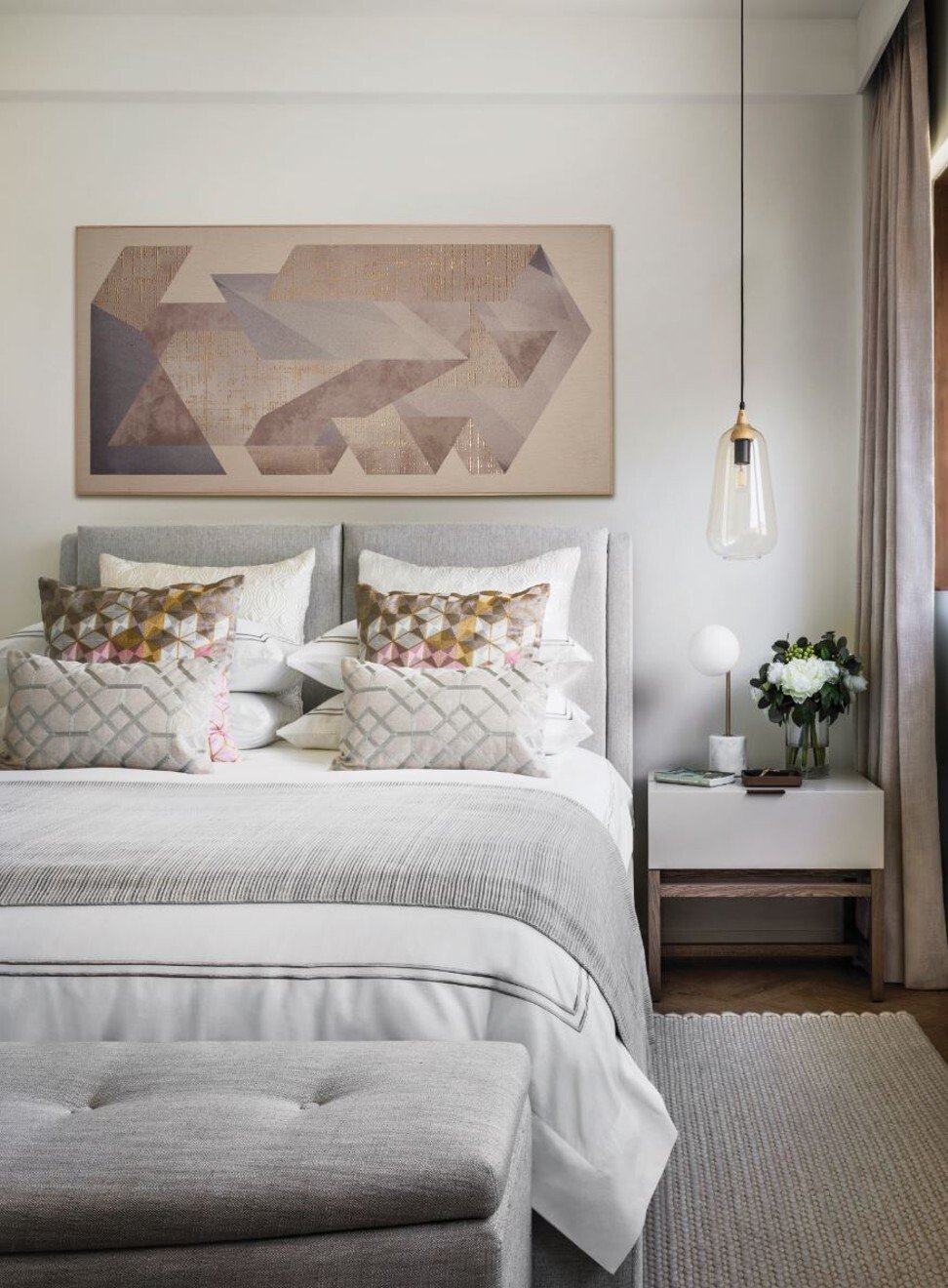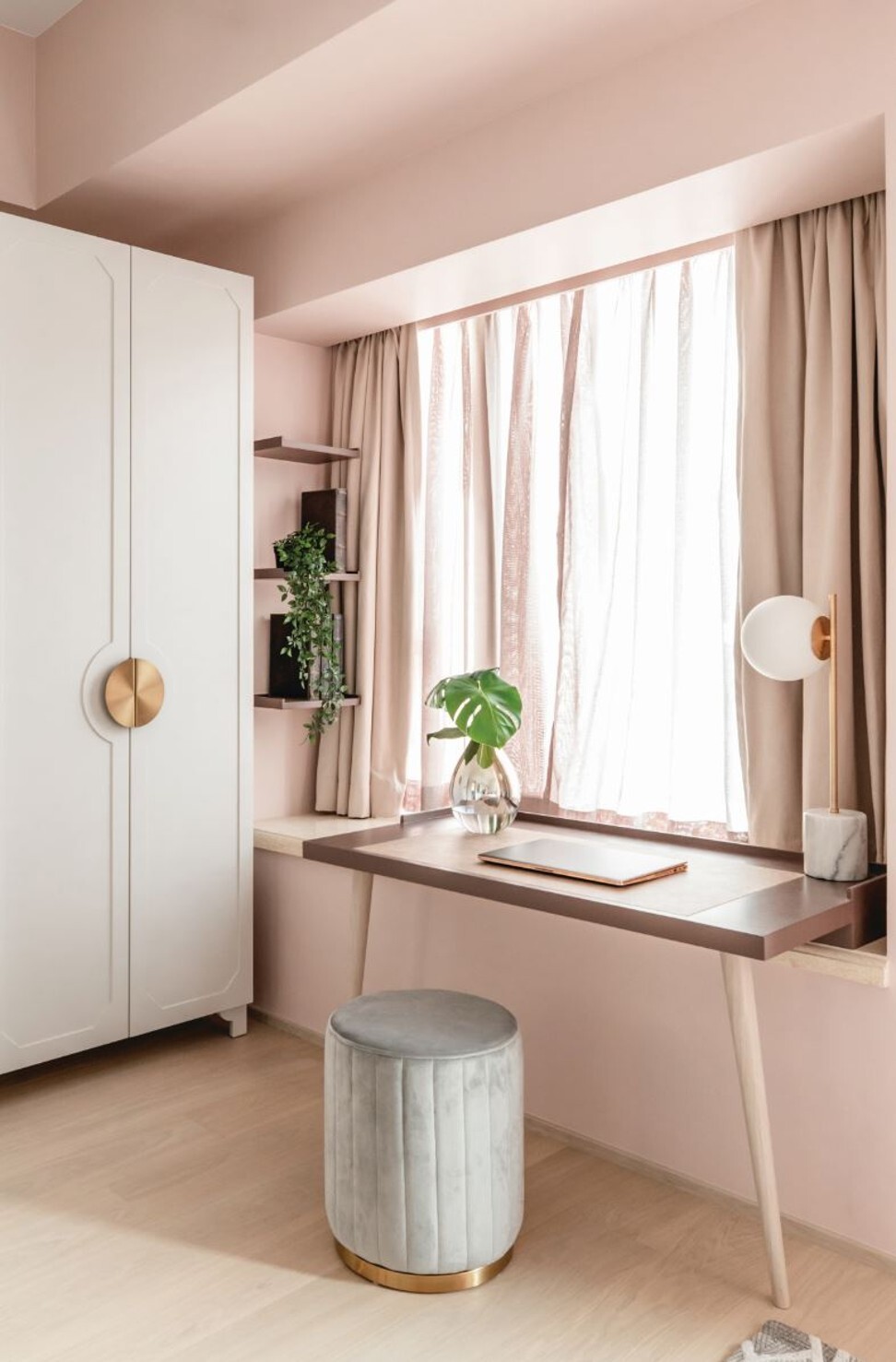
No TV, phones or laptops, please: how to designate your bedroom as a sleep-only, no-tech zone
- Unwinding and enjoying a perfect night’s rest means turning the bedroom into a peaceful and tasteful bolt-hole
Given the long working hours and record-breaking home prices in Hong Kong, it’s no secret that bedrooms often double up as work, study or entertainment spaces.
How many times have you scrolled through your Instagram or Twitter account just before bedtime, only to have a work email labelled “urgent” pop up? And when you reach out for your laptop – which you had placed on your bedside table out of habit – you think to yourself: “Ah, I might as well see what other emails I’ve received.”
All that, however, might change as a result of the Covid-19 pandemic.
“With this period of working from home, more people want to treat their bedroom as a sleep-only space,” says Rowena Gonzales, founder of Liquid Interiors. “We’re on our screens all the time – now, more than ever. Many of our clients want their bedrooms to be tech-free,” she adds.

Whereas, previously, a television was a bedroom staple, people now prefer to leave the entertainment behind when they’re getting ready for bed. We have all heard recommendations to end screen time at least 30 minutes to an hour before turning in for the night, and it is something to think about.
For Gonzales, it’s not all psychological. “The electromagnetic force (EMF) our devices emit can be quite disruptive. And we aren’t only talking about the TV or the computer, it’s the routers that come with them, too.”
Modern simplicity has always been popular a popular design choice in Hong Kong households, but with everything going on in the world, Aaron Chin, CEO of The Editors Company, says people are also looking for something a bit more organic. “In a way, there is a move towards using softer, more organic forms in the bedroom, including fabric and wood. As a result, there is a lot more texture.”
Consider for example, TREE’s Spindle range of bedroom furniture, which is crafted from sustainably-sourced European white oak. The Spindle bed features a headboard with clean-lined spokes and gently tapered legs, while the Spindle side table provides a stylish platform for a bedside lamp or an alarm clock.
A renewed focus on softer and more organic accents also means a move away from lacquered or metallic textures.
“If you look at homes in North America, shiny surfaces might give off that feeling of luxury, but in Hong Kong, where apartments are small, they might come off as tacky,” says Chin.
Tapping into this increasing demand for organic home furnishings is Okooko by European Bedding. The brand provides everything from organic latex mattresses to bamboo sheets and duvets.
For wall colours, beige, taupe and shades of whites are perennial favourites, though they are best paired with colourful accents, lilac cushions for example, or dark emerald curtains, for a more multilayered look. Carpets in neutral tones, such as those available at CarpetBuyer, are also an excellent option.

Those wanting to up the design ante could also consider a feature wall. Whether it’s splashed with abstract colour strokes or lined with LED panels, a wall is a fun way to let your personality shine. Again, it helps to create that psychological divide between your bedroom and living spaces.
For Indigo Living founder John McLennan, the bedroom is a sanctuary, but it also needs to be functional and look beautiful. The design company’s Carlton bed, which includes integrated storage, is perhaps an example of this philosophy.
McLennan says his company is also increasingly designing for Hong Kong’s smaller, compact apartments.
“For many, Indigo is synonymous with bigger furniture pieces, but you would be surprised with how many of those pieces are built for smaller spaces,” he says.
This includes the Charlotte Storage Ottoman. Upholstered in a soft grey, it doubles as both seating and storage – perfect for throwing in non-seasonal apparel or stuffed toys.
Another important aspect of storage is keeping valuables under lock and key. While the conventional safe can look out of place in a bedroom, contemporary designs from Manton Safe blend seamlessly with a wide range of aesthetics.
Aside from colours and textures, lighting is also an important part of home design. Liquid Interiors’ Gonzales is a huge fan of circadian lighting, which follows our natural 24-hour internal clock and sleep-awake cycle. There are several types of circadian lighting; some focus on the intensity of the lighting, others follow the circadian rhythm by adjusting their colour temperature throughout the day.
“If you use circadian lighting, your body becomes more in tune with shifts in your natural surroundings, which will allow you to relax more easily at night,” says Gonzales.
For parents, implementing circadian lighting might just take some of the stress away when it is time to tell your kids to go to bed.
“If house lights are kept low at night, kids will automatically calm down. Their body decompresses and starts preparing for sleep,” she says.
Speaking of sanctuaries, Gonzales notes she has also had more requests for dedicated meditation and yoga areas in the bedroom.
“People are looking to the bedroom for rest, but also a place to wind down at the end of a long working day,” she explains. “For one client, we actually designed a very low cabinet for them to stick their yoga mat in, or to place their candle on.”
Redefining space when working from home

According to a Deutsche Bank study, Hong Kong is home to the world’s highest rents.
During the period of lockdown, as the boundary between work and home became increasingly blurred, many of us looked for ways to create a routine, from getting dressed as if we were heading into the office to drawing up daily to-do lists and setting aside time for lunch breaks.
A design specialist from TREE says clients are looking for solutions that would allow them to create “a dedicated workspace and, in turn, strengthen routine and discipline in their day to day” activities.
Wall-mounted table tops and shelving units are an easy way to set up a daytime-only work station. Style it up with small decorative pieces, prints or potted plants. If your room has a window, try to position your desk so you are facing outside.
Creating that psychological divide will make you less tempted to saunter back to that buttery-soft duvet.
